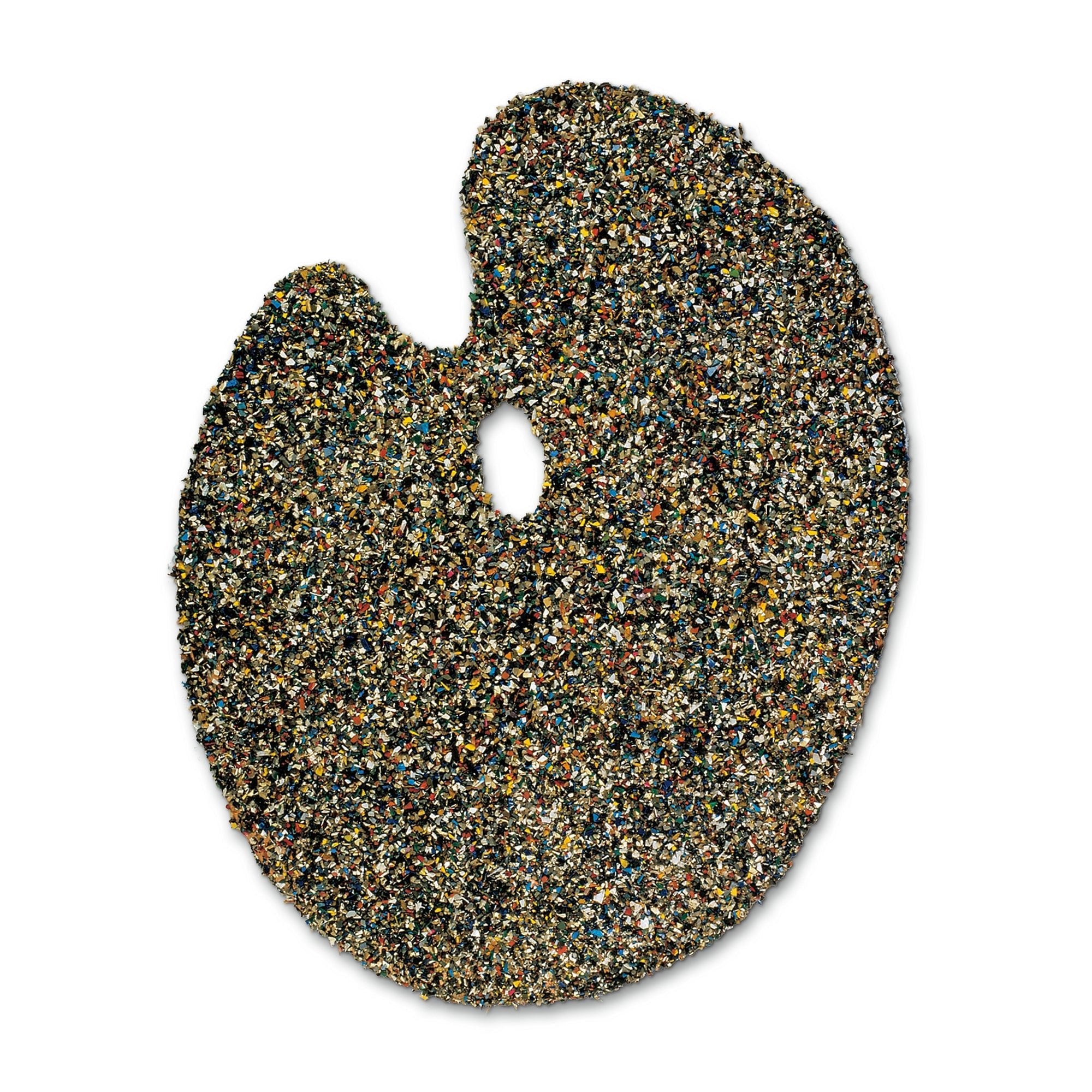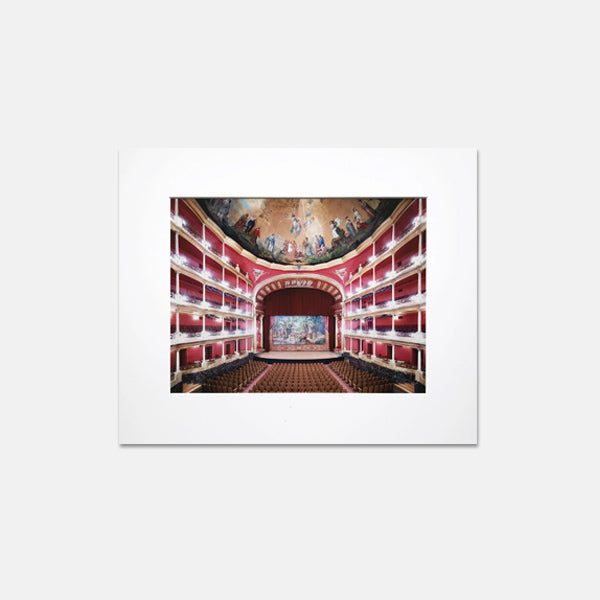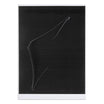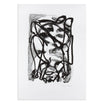
Tony Cragg - Palette
Taxes included. Shipping calculated at checkout.
Tony Cragg (British, b. 1949)
Palette (from For Joseph Beuys), 1986
Medium: Wooden palette covered with coloured plastic granules
Dimensions: 75 × 58 × 1.5 cm (29 1/2 × 22 4/5 × 3/5 in)
Edition 90: Hand signed and numbered in black ink on the accompanying Certificate of Authenticity
Condition: Excellent
Artwork details
Tony Cragg’s Palette (from For Joseph Beuys) reimagines the traditional painter’s palette by densely coating its surface with vividly colored plastic granules. This sculptural edition, signed and numbered by Cragg, pays tribute to Joseph Beuys, blending concepts of artistic materiality, texture, and color into a tactile, visually intriguing form.
About this artist
Tony Cragg, a prominent British sculptor, has made a significant impact on the art world with his innovative and dynamic approach to sculpture. Born in 1949, Cragg has explored a wide range of materials and techniques throughout his career, creating sculptures that engage with notions of form, materiality, and the relationship between nature and culture. Tony Cragg first gained recognition in the 1970s as part of the New British Sculpture movement, which challenged traditional sculptural conventions and embraced a more experimental and conceptual approach. His early artworks often incorporated found objects and discarded materials, showcasing his interest in the transformative potential of everyday materials. One of Cragg’s notable contributions to sculpture is his exploration of the human figure and the organic world. His sculptures often display a dynamic interplay between abstraction and representation, evoking natural forms, geological structures, and the human body. Tony Cragg’s ability to transform inert materials into lively, biomorphic sculptures speaks to his fascination with the underlying processes and energy that shape the natural world. Throughout his career, Cragg has embraced a diverse range of materials in his artwork, including bronze, glass, wood, and plastic. He manipulates and transforms these materials, pushing their inherent properties to create visually captivating and conceptually rich artworks. The play between texture, surface, and form in his works invites viewers to engage with the tactile and sensory qualities of sculpture. Tony Cragg’s practice extends beyond traditional sculpture, as he has also explored printmaking and drawing. His works on paper demonstrate his keen observation of the natural world and his ability to capture its complexity through line and form. Cragg’s prints and drawings often serve as visual experiments and explorations, informing and influencing his sculptural practice.

You may also like

Buy art online
Shop art editions online with transparent pricing, accurate condition reports, and fast dispatch. Designed for international collectors, we make buying limited edition prints and artworks simple, secure, and reliable.
Worldwide shipping
We ship art editions worldwide with full insurance and tracking. Handled only by trusted international carriers, each shipment is securely packaged and typically dispatched within 5 days.
Professional packaging
Every artwork is packaged to the highest professional standards. Using solid multi-layer cardboard and protective materials, we ensure your art editions arrive safely and in excellent condition.
Secure payment
Buy with confidence using secure, encrypted payments backed by advanced fraud protection. Every transaction is processed with trusted technology, ensuring a smooth and worry-free checkout for collectors worldwide.


















